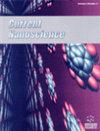掺杂镱的 Ti/Zr-SnO2/PbO2 电极提高了茜素黄 R 的电催化降解能力
IF 1.5
4区 材料科学
Q4 BIOTECHNOLOGY & APPLIED MICROBIOLOGY
引用次数: 0
摘要
简介:通过电沉积法制备的掺镱 Ti/PbO2 电极研究了茜素黄 R (AYR) 的电化学氧化。方法是使用 H2SO4 和 TA 的混合酸(体积比为 2:1)在 100 ℃ 下蚀刻钛片 50 分钟,可生成适合进一步改性的界面。扫描电子显微镜 (SEM)、能量色散光谱 (EDS)、循环伏安法 (CV) 和电化学阻抗光谱 (EIS) 表征了电极上掺杂镱的形态、组成和电化学特性。我们还引入了适当的中间层 Zr-SnO2。我们还尝试在 Zr-SnO2 中间层上采用电沉积方法制造掺杂镱(Yb)的 Ti/Zr-SnO2/PbO2 电极。由于掺杂了镱,Ti/Zr-SnO2/PbO2 电极的表面形貌发生了变化,从而影响了改性电极的电催化活性。结果所开发的掺镱 Ti/Zr-SnO2/PbO2 电极对 AYR 的去除率有所提高。结论研究了电流密度和初始 AYR 浓度对掺镱 Ti/Zr-SnO2/PbO2 电化学氧化 AYR 的影响。在电流密度为 60 mA/cm2、初始 AYR 浓度为 50.0 mg L-1 和 Na2SO4 浓度为 0.10 mol L-1 的条件下,180 min 内 AYR 的去除率为 97.3%。本文章由计算机程序翻译,如有差异,请以英文原文为准。
Improved Electrocatalytic Degradation of Alizarin Yellow R by Ti/Zr-SnO2/PbO2 Electrodes Doped with Ytterbium
Introduction: Electrochemical oxidation of Alizarin Yellow R (AYR) was investigated on Ytterbium (Yb) doped Ti/PbO2 electrodes prepared by an electrodeposition method. Method: The etching of the Ti sheet by using a mixed acid of H2SO4 and TA (volume ratio= 2: 1) for 50 min at 100 °C could produce a suitable interface for further modification. The morphologies, composition, and electrochemical properties of Yb doping on the electrode were characterized by SEM (Scanning Electron Microscopy), EDS (Energy-Dispersive Spectroscopy), Cyclic Voltammetry (CV) and Electrochemical Impedance Spectroscopy (EIS). The introduction of an appropriate intermediate layer, Zr-SnO2, was performed. We also tried to fabricate Ytterbium (Yb) doped Ti/Zr-SnO2/PbO2 electrodes by an electrodeposition method on the intermediate layer of Zr-SnO2. The surface morphology of the Ti/Zr-SnO2/PbO2 electrode was changed due to the Yb doping, which affected the electrocatalytic activity of the modified electrode. Result: The developed Yb-doped Ti/Zr-SnO2/PbO2 electrode showed improved removal efficiencies toward AYR. Conclusion: The effects of current density and initial AYR concentration on the electrochemical oxidation of AYR by Yb-doped Ti/Zr-SnO2/PbO2 were investigated. The removal rate of AYR was 97.3% in 180 min under the conditions of the current density of 60 mA/cm2 , initial AYR concentration of 50.0 mg L-1 , and Na2SO4 concentration of 0.10 mol L-1 .
求助全文
通过发布文献求助,成功后即可免费获取论文全文。
去求助
来源期刊

Current Nanoscience
工程技术-材料科学:综合
CiteScore
3.50
自引率
6.70%
发文量
83
审稿时长
4.4 months
期刊介绍:
Current Nanoscience publishes (a) Authoritative/Mini Reviews, and (b) Original Research and Highlights written by experts covering the most recent advances in nanoscience and nanotechnology. All aspects of the field are represented including nano-structures, nano-bubbles, nano-droplets and nanofluids. Applications of nanoscience in physics, material science, chemistry, synthesis, environmental science, electronics, biomedical nanotechnology, biomedical engineering, biotechnology, medicine and pharmaceuticals are also covered. The journal is essential to all researches involved in nanoscience and its applied and fundamental areas of science, chemistry, physics, material science, engineering and medicine.
Current Nanoscience also welcomes submissions on the following topics of Nanoscience and Nanotechnology:
Nanoelectronics and photonics
Advanced Nanomaterials
Nanofabrication and measurement
Nanobiotechnology and nanomedicine
Nanotechnology for energy
Sensors and actuator
Computational nanoscience and technology.
 求助内容:
求助内容: 应助结果提醒方式:
应助结果提醒方式:


